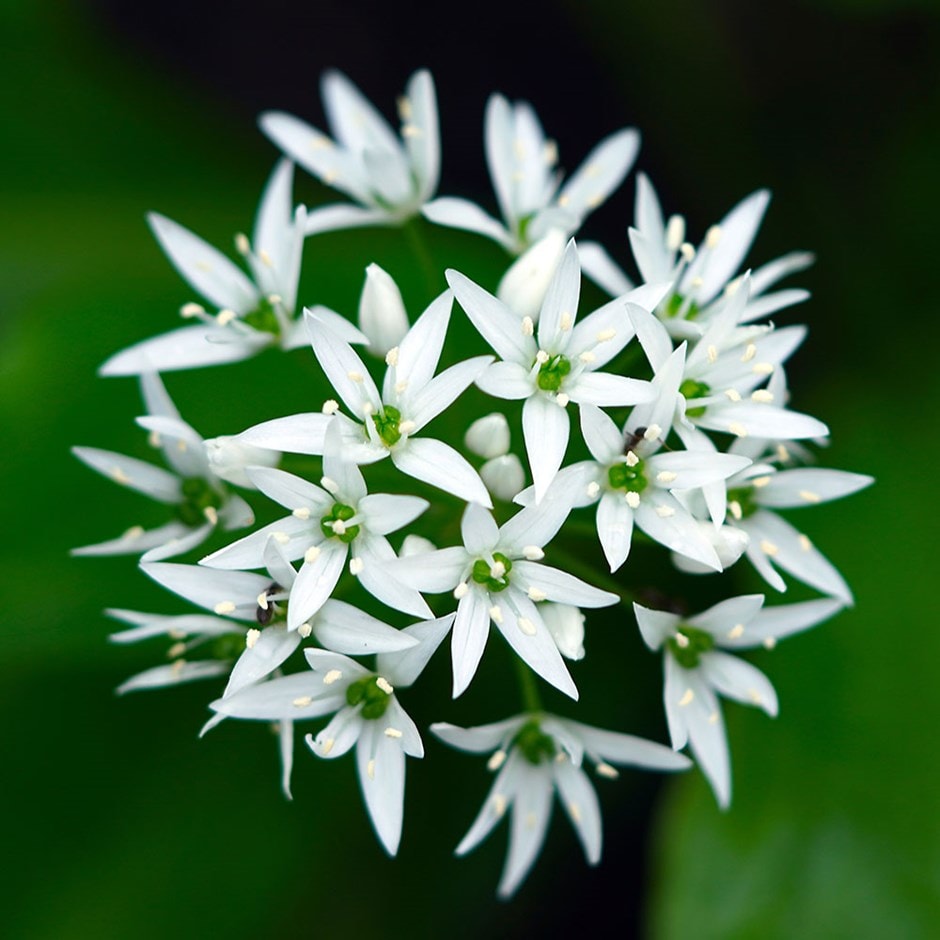
Commonly known as wild garlic, the aromatic leaves of this fast-growing perennial can be eaten and used to flavour salads or sauces - or even as a substitute for pesto! Not only are the leaves edible, but the flowers are also pretty, and they will help attract beneficial insects. A British native, it is often found colonising deciduous woodland and hedgerows where it puts on an impressive display when in full bloom in mid-spring.
How to care for Allium ursinum:
Keep contained if you do not want it to spread, otherwise over-large clumps can be lifted and divided in autumn or spring. In early spring, as growth begins, apply a balanced, slow-release fertiliser, and allow the plants to die back naturally and completely before tidying away.
Sowing instructions:
Sow the seed up to 2cm deep where you want them to grow at any time of the year. Alternatively, sow them shallowly in seed trays in trays in autumn and maintain temperatures at approximately 20C for 2-4 weeks. Then, place the seed tray in an unheated greenhouse or cold frame throughout the winter. The warmer temperatures in spring should then trigger the germination process and the seedlings can be planted out.
Flowering period:
- Jan
- Feb
- Mar
- Apr
- May
- Jun
- Jul
- Aug
- Sep
- Oct
- Nov
- Dec
Eventual height:
0.4m
Eventual spread:
1m
Position:
Full sun / light shade
Rate of growth:
Fast-growing
Soil:
Moderately fertile, moist, well-drained soil
Hardiness:
Fully hardy
-
This perennial dies back to below ground level each year in autumn, then fresh new growth appears again in spring.
-
Pets: TOXIC if eaten
Product options
Add to basket
Delivery options (pick your preferred option at checkout)

Commonly known as wild garlic, the aromatic leaves of this fast-growing perennial can be eaten and used to flavour salads or sauces - or even as a substitute for pesto! Not only are the leaves edible, but the flowers are also pretty, and they will help attract beneficial insects. A British native, it is often found colonising deciduous woodland and hedgerows where it puts on an impressive display when in full bloom in mid-spring.
How to care for Allium ursinum:
Keep contained if you do not want it to spread, otherwise over-large clumps can be lifted and divided in autumn or spring. In early spring, as growth begins, apply a balanced, slow-release fertiliser, and allow the plants to die back naturally and completely before tidying away.
Sowing instructions:
Sow the seed up to 2cm deep where you want them to grow at any time of the year. Alternatively, sow them shallowly in seed trays in trays in autumn and maintain temperatures at approximately 20C for 2-4 weeks. Then, place the seed tray in an unheated greenhouse or cold frame throughout the winter. The warmer temperatures in spring should then trigger the germination process and the seedlings can be planted out.
Flowering period:
- Jan
- Feb
- Mar
- Apr
- May
- Jun
- Jul
- Aug
- Sep
- Oct
- Nov
- Dec
Eventual height:
0.4m
Eventual spread:
1m
Position:
Full sun / light shade
Rate of growth:
Fast-growing
Soil:
Moderately fertile, moist, well-drained soil
Hardiness:
Fully hardy
-
This perennial dies back to below ground level each year in autumn, then fresh new growth appears again in spring.
-
Pets: TOXIC if eaten
